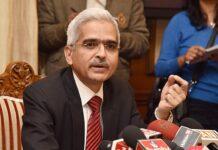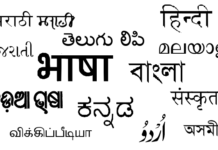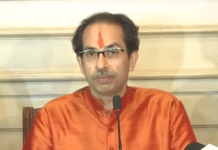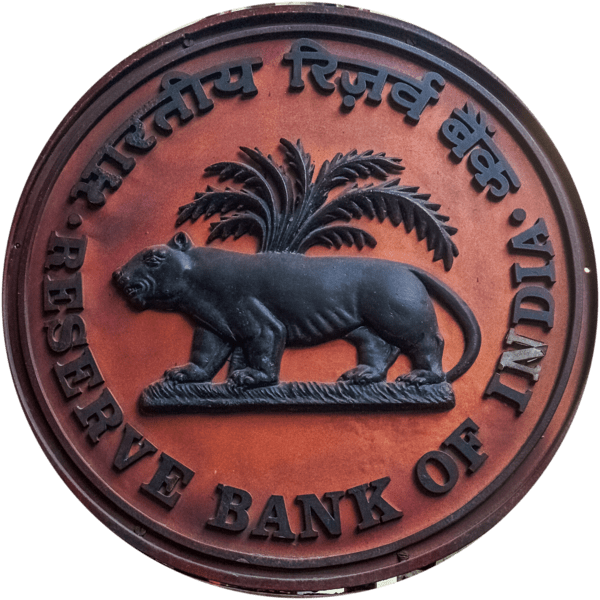RBI Governor Shaktikanta Das has made Monetary Policy Statement today.
Key points
- Indian economy remains resilient.
- Inflation has shown signs of moderation and the worst is behind us.
- Conducisive conditions of macro-economic stability as reflected in moderation in inflation, fiscal consolidation and the expectation that the current account deficit is likely to narrow in the coming quarters.
- Indian Rupee has remained one of the least volatile currencies among its Asian peers in 2022 and continues to be so this year also.
- The real policy rate has moved in to positive territory and the banking system has exited from the Chakravyuh of excess liquidity without causing any disruption. Monetary policy transmission is also picking up
- On liquidity, RBI will remain flexible and responsive to the requirements of the productive sectors of the economy.
Full Text of Governor’s Statement
As I set out the first monetary policy statement of the new year, I am reminded of the historical significance of 2023 for the Reserve Bank of India. From being a Joint Stock Company, the Reserve Bank was brought into public ownership on January 1, 1949.1 Thus, 2023 marks the 75th year of public ownership of the Reserve Bank and its emergence as a national institution. This is an opportune moment to briefly reflect upon the evolution of monetary policy over this period. In the two decades after independence, the Reserve Bank’s role was to support the credit needs of the economy under the five-year plans. The following two decades were characterised by bank nationalisation in 1969, oil shocks, monetisation of large budget deficits and sharp rise in money supply and inflation. Monetary targeting was adopted in the mid-1980s to contain growth in money supply and curb inflation pressures. Since the early 1990s, the Reserve Bank focused on market reforms and institution building. A multiple indicator approach was adopted in April 1998 under which a host of indicators were monitored for policy making. In the aftermath of the global financial crisis and the taper tantrum, as inflationary conditions worsened in India, flexible inflation targeting (FIT) was formally adopted in June 2016 to provide a credible nominal anchor for monetary policy. As we know, the primary objective of monetary policy under the FIT framework is to maintain price stability while keeping in mind the objective of growth.
2. Coming to present times, the unprecedented events of the last three years have put to test monetary policy frameworks globally. In a very short period, monetary policies across the world have veered from one extreme to the other in response to a series of overlapping shocks. In contrast to the Great Moderation era of the 1990s and the early years of this century, monetary policy was confronted with an unprecedented contraction in economic activity followed by a surge in global inflation. This calls for a deeper understanding of the structural changes in the global economy and inflation dynamics, and their implications for the conduct of monetary policy.
3. In the current unsettled global environment, emerging market economies (EMEs) are facing sharp trade-offs between supporting economic activity and controlling inflation, while preserving policy credibility. As global fault lines emerge in trade, technology and investment flows, there is an urgent need to reinforce global cooperation. The world is looking to India, now at the helm of G-20, to energise global partnership in several critical areas. This reminds me of what Mahatma Gandhi had said: “I do believe that…India…can make a lasting contribution to the peace and solid progress of the world.”2
Decisions and Deliberations of the Monetary Policy Committee (MPC)
4. The Monetary Policy Committee (MPC) met on 6th, 7th and 8th February 2023. Based on an assessment of the macroeconomic situation and its outlook, the MPC decided by a majority of 4 members out of 6 to increase the policy repo rate by 25 basis points to 6.50 per cent, with immediate effect. Consequently, the standing deposit facility (SDF) rate will stand revised to 6.25 per cent; and the marginal standing facility (MSF) rate and the Bank Rate to 6.75 per cent. The MPC also decided by a majority of 4 out of 6 members to remain focused on withdrawal of accommodation to ensure that inflation remains within the target going forward, while supporting growth.
5. Let me now explain the MPC’s rationale for these decisions on the policy rate and the stance. The global economic outlook does not look as grim now as it did a few months ago. Growth prospects in major economies have improved, while inflation is on a descent, though it still remains well above the target in major economies. The situation remains fluid and uncertain. Reflecting the recent optimism, the IMF has revised upwards the global growth estimates for 2022 and 2023.3 As price pressures wane, several central banks have opted for slower rate hikes or pauses. The US dollar has retreated sharply from its highest level in two decades. Tighter financial conditions caused by aggressive monetary policy actions, volatile financial markets, debt distress, protracted geopolitical hostilities and fragmentation continue to impart high uncertainty to the outlook for the global economy.
6. Amidst these volatile global developments, the Indian economy remains resilient. Real GDP growth is estimated at 7.0 per cent in 2022-23, according to the first advance estimate of the National Statistical Office (NSO). Higher rabi acreage, sustained urban demand, improving rural demand, robust credit expansion, gains in consumer and business optimism and the government’s enhanced thrust on capital expenditure and infrastructure in the Union Budget 2023-24 should support economic activity in the coming year. Weak external demand and the uncertain global environment, however, would be a drag on domestic growth prospects.
7. Consumer price inflation in India moved below the upper tolerance level during November-December 2022, driven by a strong decline in prices of vegetables. Core inflation, however, remains sticky.
8. Looking ahead, while inflation is expected to moderate in 2023-24, it is likely to rule above the 4 per cent target. The outlook is clouded by continuing uncertainties from geopolitical tensions, global financial market volatility, rising non-oil commodity prices and volatile crude oil prices. At the same time, economic activity in India is expected to hold up well. The rate hikes since May 2022 are still working their way through the system. On balance, the MPC was of the view that further calibrated monetary policy action is warranted to keep inflation expectations anchored, break the persistence of core inflation and thereby strengthen the medium-term growth prospects. Accordingly, the MPC decided to raise the policy repo rate by 25 basis points to 6.50 per cent. The MPC will continue to maintain strong vigil on the evolving inflation outlook so as to ensure that it remains within the tolerance band and progressively aligns with the target.
9. Inflation is expected to average 5.6 per cent in Q4:2023-24 while the policy repo rate is 6.50 per cent. Adjusted for inflation, the policy rate still trails its pre-pandemic levels. Liquidity remains in surplus, with an average daily absorption of ₹1.6 lakh crore under the LAF in January 2023. The overall monetary conditions, therefore, remain accommodative and hence, the MPC decided to remain focused on withdrawal of accommodation.
Assessment of Growth and Inflation
Growth
10. Available data for Q3 and Q4:2022-23 indicate that economic activity in India remains resilient. Urban consumption demand has been firming up, driven by sustained recovery in discretionary spending, especially on services such as travel, tourism and hospitality. Passenger vehicle sales and domestic air passenger traffic posted robust year-on-year (y-o-y) growth. Domestic air passenger traffic crossed pre-pandemic levels for the first time in December 2022. Rural demand continues to show signs of improvement as tractor sales and two-wheeler sales expanded in December. Several high frequency indicators4 also point towards strengthening of activity.
11. Investment activity continues to gain traction. Non-food bank credit expanded by 16.7 per cent (y-o-y) as on January 27, 2023. The total flow of resources to the commercial sector has increased by ₹20.8 lakh crore during 2022-23 so far as against ₹12.5 lakh crore a year ago. Indicators of fixed investment – cement output; steel consumption; and production and import of capital goods – registered robust growth in November and December. In several sectors such as cement, steel, mining and chemicals, there are signs that additional capacity is being created in the private sector. According to the RBI’s survey, seasonally adjusted capacity utilisation increased to 74.5 per cent in Q2:2022-23. The drag from net external demand, on the other hand, continued as merchandise exports contracted in Q3:2022-23.
12. On the supply side, agricultural activity remains strong with good rabi sowing, higher reservoir levels, good soil moisture, favourable winter temperature and comfortable availability of fertilisers.5 PMI manufacturing and PMI services remained in expansion at 55.4 and 57.2 respectively, in January 2023.
13. Turning to the outlook, the expected higher rabi output has improved the prospects of agriculture and rural demand. The sustained rebound in contact-intensive sectors should support urban consumption. Broad-based credit growth, improving capacity utilisation, government’s thrust on capital spending and infrastructure should bolster investment activity. According to our surveys, manufacturing, services and infrastructure sector firms are optimistic about the business outlook. On the other hand, protracted geopolitical tensions, tightening global financial conditions and slowing external demand may continue as downside risks to domestic output. Taking all these factors into consideration, real GDP growth for 2023-24 is projected at 6.4 per cent with Q1 at 7.8 per cent; Q2 at 6.2 per cent; Q3 at 6.0 per cent; and Q4 at 5.8 per cent. The risks are evenly balanced.
Inflation
14. Headline CPI inflation moderated by 105 basis points during November-December 2022 from its level of 6.8 per cent in October 2022. This was due to a softening in food inflation on the back of a sharp deflation in vegetable prices, which more than offset the inflationary pressures from cereals, protein-based food items and spices. As a result of this earlier than anticipated and steeper seasonal decline in vegetable prices, inflation for Q3:2022-23 has turned out to be lower than our projections. Core CPI inflation (i.e., CPI excluding food and fuel), however, remained elevated.
15. Going ahead, the food inflation outlook will benefit from a likely bumper rabi harvest led by wheat and oilseeds. Mandi arrivals and kharif paddy procurement have been robust, resulting in improvement in buffer stocks of rice. All these developments augur favourably for the food inflation outlook in 2023-24.
16. Considerable uncertainties remain on the likely trajectory of global commodity prices, including price of crude oil. Commodity prices may remain firm with the easing of COVID-19 related restrictions in some parts of the world. The ongoing pass-through of input costs, especially in services, could keep core inflation at elevated levels. The commitment to fiscal consolidation that has been carried forward in the Union Budget 2023-24 and the future trajectory of reducing the gross fiscal deficit will engender an environment of macroeconomic stability. This augurs well for the inflation outlook. Further, the low volatility of the Indian rupee relative to peer currencies limits the impact of imported price pressures and other global spillovers. Taking into account these factors and assuming an average crude oil price (Indian basket) of US$ 95 per barrel, inflation is projected at 6.5 per cent in 2022-23, with Q4 at 5.7 per cent. On the assumption of a normal monsoon, CPI inflation is projected at 5.3 per cent for 2023-24, with Q1 at 5.0 per cent, Q2 at 5.4 per cent, Q3 at 5.4 per cent and Q4 at 5.6 per cent. The risks are evenly balanced.
17. Headline inflation has moderated with negative momentum in November and December 2022, but the stickiness of core or underlying inflation is a matter of concern. We need to see a decisive moderation in inflation. We have to remain unwavering in our commitment to bring down inflation. Thus, monetary policy has to be tailored to ensuring a durable disinflation process. A rate hike of 25 basis points is considered as appropriate at the current juncture. The reduction in the size of the rate hike provides the opportunity to evaluate the effects of the actions taken so far on the inflation outlook and on the economy at large. It also provides elbow room to weigh all incoming data and forecasts to determine appropriate actions and policy stance, going forward. Monetary policy will continue to be agile and alert to the moving parts in the inflation trajectory to effectively address the challenges to the economy.
Liquidity and Financial Market Conditions
18. As we approach the end of 2022-23, it is worthwhile to recapitulate the key developments on the monetary policy front over the last one year. After the onset of the war in Europe, which drastically altered the growth-inflation dynamics across the world, including India, we have taken a series of steps in the best interest of the Indian economy. We accorded primacy to price stability over growth in April 2022; we instituted a major reform in the monetary policy operating procedure through the introduction of the standing deposit facility (SDF); we restored the width of the policy corridor to its pre-pandemic level; we raised the repo rate by 40 bps and the cash reserve ratio (CRR) by 50 bps in an off-cycle meeting in May; we shifted the policy stance to focus on withdrawal of accommodation; we continued the rate tightening cycle in every meeting of the MPC; and we adopted a nimble and flexible approach to liquidity management by conducting both variable rate reverse repo (VRRR) and variable rate repo (VRR) operations as per requirement. As a result of all these measures, the real policy rate has been nudged into positive territory; the banking system has moved out of the Chakravyuh6 of excess liquidity; inflation is moderating; and economic growth continues to be resilient.
19. As I make this statement, system liquidity remains in surplus, though of a lower order compared to April 2022. In the period ahead, while higher government expenditure and the anticipated return of forex inflows are likely to augment systemic liquidity, it would get modulated by the scheduled redemption of LTRO and TLTRO7 funds during February to April 2023. The Reserve Bank will remain flexible and responsive towards meeting the productive requirements of the economy. We will conduct operations on either side of the LAF, depending on the evolving liquidity conditions.
20. As part of our gradual move towards normalising liquidity and market operations, it has now been decided to restore market hours for the Government Securities market to the pre-pandemic timing of 9 am to 5 pm.8 Moreover, as part of our ongoing endeavour to further develop the government securities market, we propose to permit lending and borrowing of G-secs. This will provide investors with an avenue to deploy their idle securities, enhance portfolio returns and facilitate wider participation. This measure will also add depth and liquidity to the G-sec market; aid efficient price discovery; and work towards a smooth completion of the market borrowing programme of the centre and states.
21. The pace of transmission of monetary policy actions to lending and deposit rates has strengthened in the current tightening cycle. The weighted average lending rates (WALR) on fresh rupee loans and outstanding loans increased by 137 bps and 80 bps respectively, during May to December 2022. The weighted average domestic term deposit rate on fresh deposits and outstanding deposits increased by 213 bps and 75 bps respectively.
22. The Indian Rupee has remained one of the least volatile currencies among its Asian peers in calendar year 2022 and continues to be so this year also.9 Similarly, the depreciation and the volatility of the Indian rupee during the current phase of multiple shocks is far lower than during the global financial crisis and the taper tantrum.10 In a fundamental sense, the movements of the rupee reflect the resilience of the Indian economy.
External Sector
23. The current account deficit (CAD) for the first half of 2022-23 stood at 3.3 per cent of GDP. The situation has shown improvement in Q3:2022-23 as imports moderated in the wake of lower commodity prices, resulting in narrowing of the merchandise trade deficit. Further, services exports rose by 24.9 per cent (y-o-y) in Q3:2022-23, driven by software, business and travel services. Global software and IT services spending is expected to remain strong in 2023. Remittance growth for India in H1 of 2022-23 was around 26 per cent – more than twice the World Bank’s projection for the year. This is likely to remain robust owing to better growth prospects of the Gulf countries. The net balance under services and remittances are expected to remain in large surplus, partly offsetting the trade deficit. The CAD is expected to moderate in H2:2022-23 and remain eminently manageable and within the parameters of viability.11
24. On the financing side, net foreign direct investment (FDI) flows remain strong at US $ 22.3 billion during April-December 2022 (US$ 24.8 billion in the corresponding period last year). Foreign portfolio flows have shown signs of improvement with positive flows of US$ 8.5 billion during July to February 6, led by equity flows (foreign portfolio flows are, however, negative during the financial year so far). Net inflows under non-resident deposits increased to US$ 3.6 billion during April-November 2022 from US $ 2.6 billion a year ago, boosted by the Reserve Bank’s July 6th measures. Foreign exchange reserves have rebounded from US$ 524.5 billion on October 21, 2022 to US$ 576.8 billion as on January 27, 2023 covering around 9.4 months of projected imports for 2022-23. India’s external debt ratios are low by international standards.12
Additional Measures
25. I shall now announce certain additional measures.
Penal Charges on Loans
26. At present, Regulated Entities (REs) are required to have a policy for levy of penal interest on advances. The REs, however, follow divergent practices on levying of such charges. In certain cases, these charges are founded to be excessive. To further enhance transparency, reasonableness and consumer protection, draft guidelines on levy of penal charges will be issued to obtain comments from stakeholders.
Climate Risk and Sustainable Finance
27. Recognising the importance of climate related financial risks which may have financial stability implications, the Reserve Bank had issued a Discussion Paper on Climate Risk and Sustainable Finance in July 2022. Based on the feedback received, it has been decided to issue guidelines for REs on (i) a broad framework for acceptance of Green Deposits; (ii) disclosure framework on Climate-related Financial Risks; and (iii) guidance on Climate Scenario Analysis and Stress Testing.
Expanding the Scope of TReDS
28. For the benefit of MSMEs, the Reserve Bank had introduced a framework in 2014 to facilitate financing of their trade receivables through Trade Receivables Discounting System (TReDS). It is now proposed to expand the scope of TReDs by (i) providing insurance facility for invoice financing; (ii) permitting all entities/institutions undertaking factoring business to participate as financiers in TReDS; and (iii) permitting re-discounting of invoices (that is, developing a secondary market in TReDS). These measures are expected to improve the cash flows of the MSMEs.
Extending UPI for Inbound Travellers to India
29. UPI has become hugely popular for retail digital payments in India. It is now proposed to permit all inbound travellers to India to use UPI for their merchant payments (P2M) while they are in the country. To begin with, this facility will be extended to travellers from G-20 countries arriving at select international airports.
QR Code based Coin Vending Machine – Pilot project
30. The Reserve Bank of India will launch a pilot project on QR Code based Coin Vending Machine (QCVM) in 12 cities. These vending machines will dispense coins against debit to the customer’s account using UPI instead of physical tendering of banknotes. This will enhance the ease of accessibility to coins. Based on the learnings from the pilot, guidelines will be issued to banks to promote distribution of coins using these machines.
Conclusion
31. As we begin a new year, it is a good time to reflect upon our journey so far and what lies ahead. When I look back, it is heartening to note that the Indian economy successfully dealt with multiple major shocks in the last three years and has emerged stronger than before. India has the inherent strength, an enabling policy environment, and strong macroeconomic fundamentals and buffers to deal with the future challenges.
***
Post Monetary Policy Press Conference by Shri Shaktikanta Das, RBI Governor






















